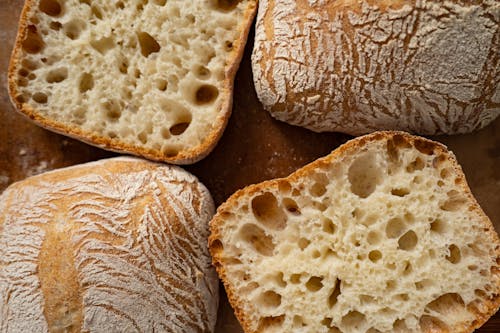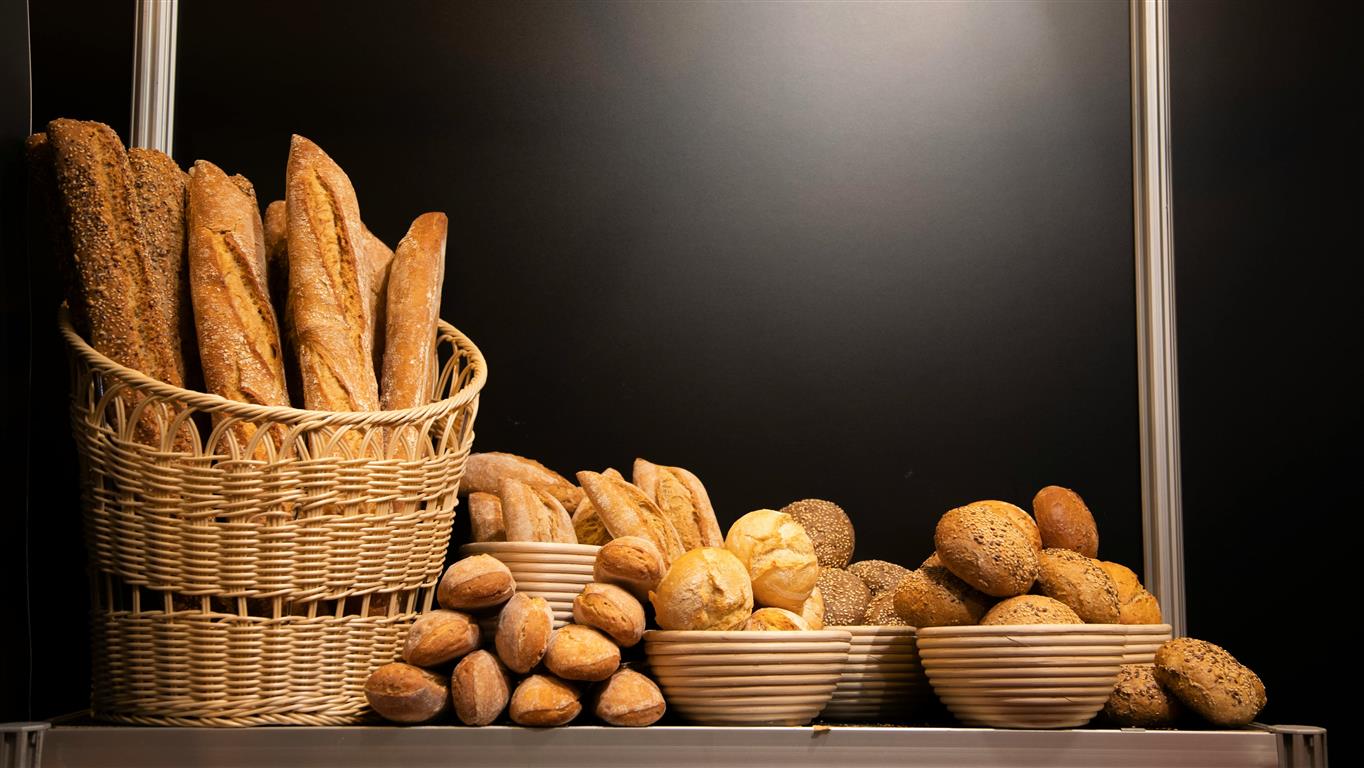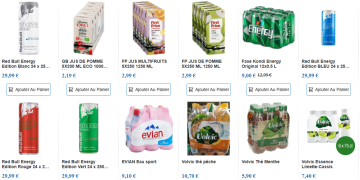
Introduction
Artisanal bread, with its rich flavors, varied textures, and crusty exteriors, represents a pinnacle of bread-making craftsmanship. Unlike mass-produced loaves, artisanal breads are created with care, using traditional techniques and high-quality ingredients. This essay explores the art of baking artisanal bread, from understanding its fundamentals to experimenting with recipes that showcase the diversity and depth of this beloved culinary craft.
The Craft of Artisanal Bread Baking
The Philosophy Behind Artisanal Bread
Artisanal bread-making is characterized by a commitment to quality and tradition. Unlike commercial bread, which often relies on fast-rising yeasts and additives, artisanal breads are crafted using time-honored methods. The focus is on flavor development, texture, and the overall experience of the bread. Key aspects of artisanal bread include:
- Natural Leavening: Many artisanal breads use natural leavening agents such as sourdough starters, which rely on wild yeast and bacteria to ferment the dough. This process contributes to a more complex flavor profile and a distinctive tang.
- Handcrafting: Artisanal bread is typically shaped and handled by hand, which allows for greater control over the dough and results in unique textures and shapes.
- Long Fermentation: Longer fermentation times improve the bread’s flavor and texture. This process develops the gluten structure and enhances the bread’s complexity.
- High-Quality Ingredients: Artisanal bakers often use organic or specialty flours and other premium ingredients to ensure the best possible taste and texture.
Essential Techniques for Artisanal Bread
- Starter Cultivation: A sourdough starter, made from flour and water, captures wild yeast and bacteria from the environment. It requires regular feeding and care to maintain its vitality.
- Kneading and Folding: Proper kneading develops the gluten network, which gives the bread its structure. Stretch and fold techniques are used during fermentation to strengthen the dough.
- Proofing: Proofing allows the dough to rise and develop flavor. Artisanal breads often undergo multiple proofing stages, including a bulk fermentation and a final proof before baking.
- Shaping: Shaping the dough correctly ensures even baking and attractive results. Different types of bread require different shaping techniques.
- Baking: Artisanal breads are often baked in a preheated Dutch oven or on a baking stone to achieve a crisp crust. Steam may be introduced to the oven to enhance the crust’s texture.
Best Artisanal Bread Recipes to Try
1. Sourdough Bread
Sourdough is perhaps the most iconic artisanal bread, known for its tangy flavor and chewy texture. The natural leavening process used in sourdough baking results in a bread with a complex flavor profile.
Ingredients:
- 1 cup active sourdough starter
- 1 1/2 cups lukewarm water
- 4 cups bread flour
- 1 1/2 teaspoons salt
Instructions:
- In a large bowl, mix the sourdough starter with water. Gradually add flour and salt, stirring until a shaggy dough forms.
- Turn the dough onto a floured surface and knead for about 10 minutes, until smooth and elastic.
- Place the dough in a lightly oiled bowl, cover with a damp cloth, and let it rise for 4-6 hours, or until doubled in size.
- Gently deflate the dough and shape it into a round loaf. Place it on a parchment-lined baking sheet or into a floured banneton.
- Cover and let it proof for 1-2 hours.
- Preheat the oven to 450°F (230°C). If using a Dutch oven, preheat it as well.
- Slash the top of the loaf with a sharp knife and transfer it to the oven. Bake for 30-35 minutes, until the crust is deeply browned and the bread sounds hollow when tapped.
2. Pain de Campagne (French Country Bread)
Pain de Campagne is a rustic French bread with a crisp crust and tender crumb. It’s often made with a mixture of white and whole wheat flours.
Ingredients:
- 1 cup active sourdough starter
- 1 1/2 cups lukewarm water
- 2 cups all-purpose flour
- 2 cups whole wheat flour
- 2 teaspoons salt
Instructions:
- Combine the sourdough starter and water in a large bowl. Add the flours and salt, mixing until a dough forms.
- Knead the dough on a floured surface for 8-10 minutes, until smooth and elastic.
- Place the dough in a lightly oiled bowl, cover, and let rise for 3-4 hours, or until doubled.
- Turn the dough onto a floured surface and shape into a round loaf. Place it on a floured baking sheet or in a well-floured banneton.
- Cover and let proof for 1-2 hours.
- Preheat the oven to 475°F (245°C). If using a baking stone, preheat it as well.
- Slash the top of the loaf and transfer it to the oven. Bake for 35-40 minutes, until golden brown and hollow-sounding.
3. Ciabatta
Ciabatta is an Italian bread known for its airy crumb and crispy crust. It requires a high-hydration dough, which contributes to its open texture.
Ingredients:
- 1 1/2 cups active sourdough starter
- 1 1/2 cups lukewarm water
- 3 1/2 cups bread flour
- 2 teaspoons salt
- 1/2 teaspoon instant yeast
Instructions:
- In a large bowl, mix the sourdough starter with water. Add the flour, salt, and yeast, stirring until well combined.
- The dough will be very sticky; use a wet spatula or your hands to mix it thoroughly.
- Cover and let the dough rise for 1-2 hours, until doubled in size.
- Turn the dough onto a floured surface and gently shape it into a rectangular loaf.
- Transfer the dough to a floured baking sheet and let it proof for 30-60 minutes.
- Preheat the oven to 450°F (230°C).
- Bake the ciabatta for 25-30 minutes, until the crust is golden and crisp.
4. Multigrain Bread
Multigrain bread is packed with various seeds and grains, offering a hearty and nutritious option. It’s perfect for sandwiches or toasted with a bit of butter.
Ingredients:
- 1 cup warm water
- 2 tablespoons honey
- 1 tablespoon active dry yeast
- 2 cups all-purpose flour
- 1 cup whole wheat flour
- 1/2 cup rolled oats
- 1/4 cup sunflower seeds
- 1/4 cup flaxseeds
- 1/4 cup sesame seeds
- 2 teaspoons salt
Instructions:
- In a bowl, mix warm water and honey. Sprinkle the yeast on top and let it sit for 5-10 minutes, until foamy.
- In a large bowl, combine the flours, oats, seeds, and salt. Add the yeast mixture and mix until a dough forms.
- Turn the dough onto a floured surface and knead for about 8 minutes.
- Place the dough in a lightly oiled bowl, cover, and let rise for 1-2 hours, or until doubled.
- Shape the dough into a loaf and place it in a greased loaf pan. Let it proof for 30-45 minutes.
- Preheat the oven to 375°F (190°C).
- Bake for 35-40 minutes, until the loaf sounds hollow when tapped.
5. Focaccia
Focaccia is an Italian flatbread that is wonderfully versatile and can be topped with a variety of ingredients, from herbs to olives.
Ingredients:
- 1 1/2 cups warm water
- 1 tablespoon active dry yeast
- 3 1/2 cups all-purpose flour
- 1/4 cup olive oil, plus more for drizzling
- 1 teaspoon salt
- 1 tablespoon fresh rosemary, chopped
- Coarse sea salt for sprinkling
Instructions:
- In a bowl, dissolve yeast in warm water and let it sit for 5 minutes.
- Add flour, olive oil, and salt to the yeast mixture, mixing until a dough forms.
- Turn the dough onto a floured surface and knead for 5-7 minutes.
- Place the dough in a lightly oiled bowl, cover, and let rise for 1-2 hours.
- Transfer the dough to a greased baking sheet, spreading it out to fit the pan. Use your fingers to create dimples in the dough.
- Drizzle with olive oil and sprinkle with rosemary and coarse sea salt.
- Bake at 425°F (220°C) for 20-25 minutes, until golden brown.

Conclusion
Artisanal bread baking is a rewarding pursuit that combines tradition, skill, and creativity. From the tangy depth of sourdough to the airy texture of ciabatta, each type of artisanal bread offers a unique taste experience. By embracing traditional techniques and experimenting with different recipes, bakers can explore a world of flavors and textures, creating breads that are both delicious and meaningful. Whether you’re an experienced baker or a newcomer to the craft, the art of artisanal bread-making invites you to savor the simple pleasure of a well-crafted loaf and the satisfaction of creating something truly special.











